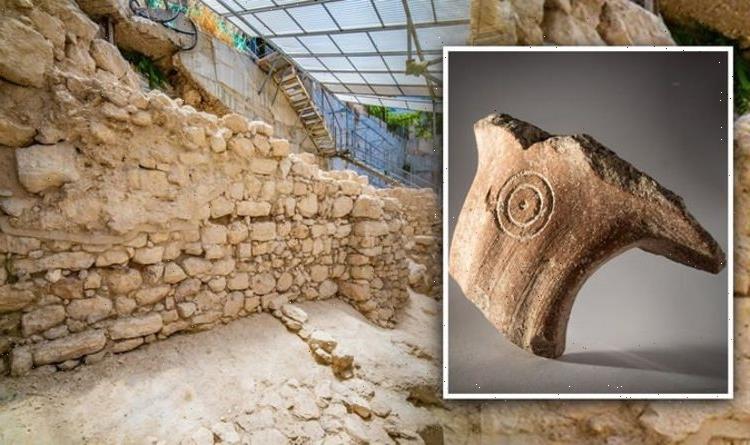Jerusalem: Expert discusses rare coin from Bar Kokhba revolt
We use your sign-up to provide content in ways you’ve consented to and to improve our understanding of you. This may include adverts from us and 3rd parties based on our understanding. You can unsubscribe at any time. More info
The First Temple period (1200 to 586 BC) describes one of the most thrilling but enigmatic periods in the Holy Land’s history. Although the Bible paints a vivid picture of life in Jerusalem during the time of the First Temple – Solomon’s Temple – very little archaeological evidence has survived of this holy structure. According to the biblical account, the temple was toppled in 586 BC after an army of Babylonians led by King Nebuchadnezzar laid siege to Jerusalem.
The invading forces raised the city to the ground, plundered its riches and drove many of its people into exile or captivity.
A passage in the Bible’s 2 Kings 25:9 reads: “He burned the house of the LORD, the kings’s house, and all the houses of Jerusalem; even every great house he burned with fire.”
And yet, recent excavations in the City of David have unearthed fortifications and artefacts with tantalising links to this biblical period.
The City of David encompasses parts of a Palestinian and Israeli village, believed to be the oldest parts of Jerusalem dating to the Iron Age.


Archaeologists in the City of David National Park have uncovered a missing fragment of Jerusalem’s eastern wall, which was destroyed by the Babylonian invaders.
The wall’s remains were found near the Temple Mount, the contested centre of spiritual life in Jerusalem.
Measuring just 16ft (5m) across, the wall was one of many discoveries made on the site, including ancient artefacts and ruins of homes.
Most importantly, however, the discovery proves the ancient city of Jerusalem was surrounded by an impressive, fortified wall.
Fragments of the fortifications have been found in the 1960s and 1970s but they were disconnected and assumed to be part of separate structures.
Jerusalem: Archaeologist discusses gem seal discovery
Upon figuring out the significance of the discovery, one of the archaeologists was overcome with emotion.
Dr Filip Vukosavovic of the Ancient Jerusalem Research Center, who coordinated the dig, was quoted by Jerusalem Post, saying: “When we exposed the first part of the wall, an area about one metre per one metre large, I immediately understood what we had found. I almost cried.”
According to the Israel Antiquities Authority (IAA), the fortification protected the ancient city during “the time of the kings of Judah” until the city was toppled 2,600 years ago.
The IAA announced in a Facebook post: “The excavations uncovered remains of the destruction, however, not all was destroyed and parts of the walls were found still standing.


“The new exposure connects two previously excavated sections on the eastern slope.
“Remains of the destruction were also found in the building next to the wall and inside the rows of storage, jars were discovered that were broken when the building burned and collapsed.”
Archaeologists have dated the jars to the final days of the Kingdom of Judah – the Iron Age kingdom that ruled over the Southern Levan before the unified Kingdom of Israel.
Even more intriguingly, the jars’ handles were stamped with characteristic rosette-shaped impressions.
Near the uncovered wall, the archaeologists also unearthed a Babylonian stone seal depicting a figure standing before the Babylonian deities Marduk and Nabu.
The excavations also revealed a clay seal – bulla – bearing the name “Tsafan”.
The discoveries are being prepared for exhibition later this year.
The IAA said: “These exciting findings will be presented this October at the Israel Antiquities Authority’s annual conference ‘New Studies in the Archaeology of Jerusalem and its Region’.”
Source: Read Full Article
